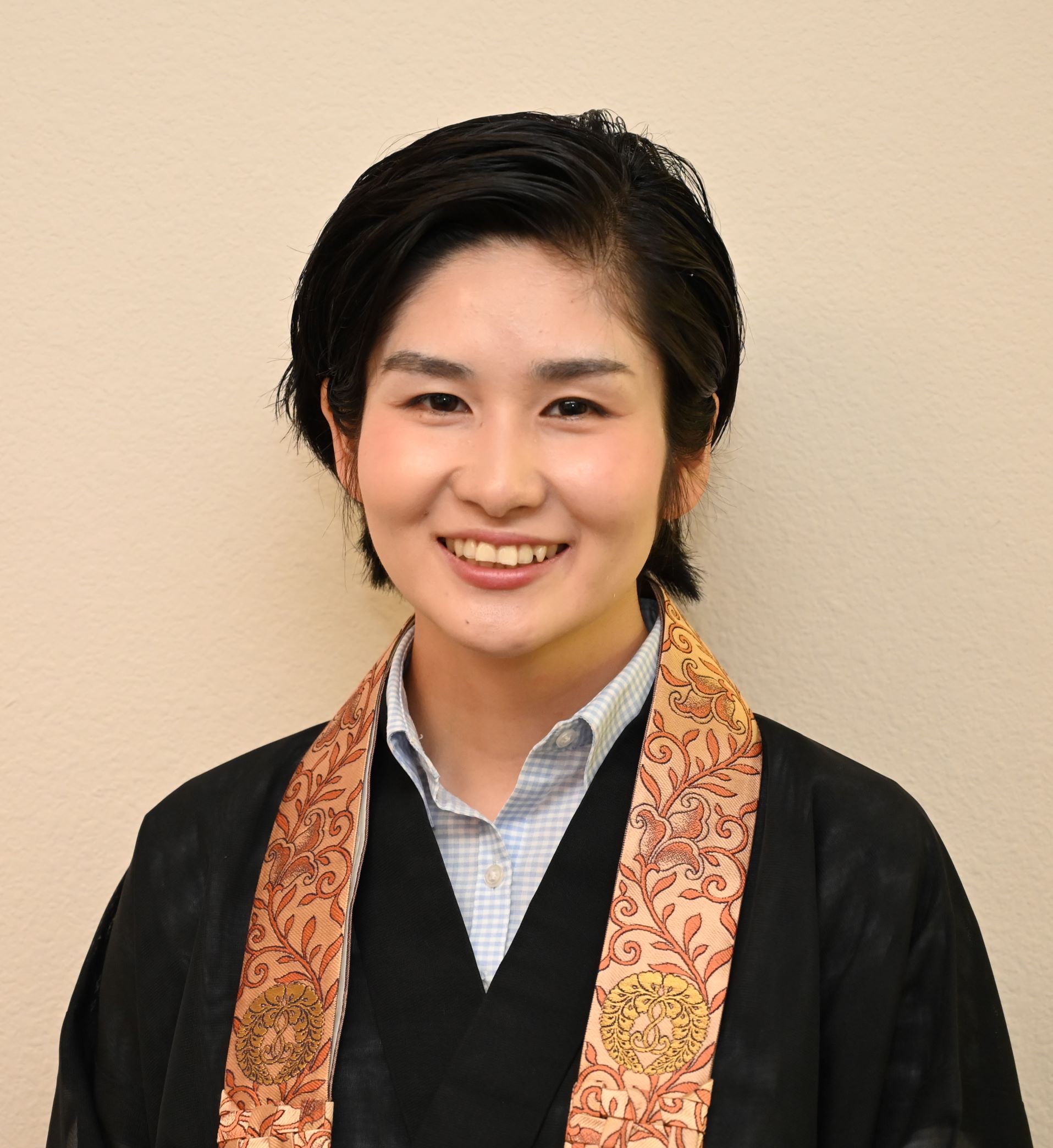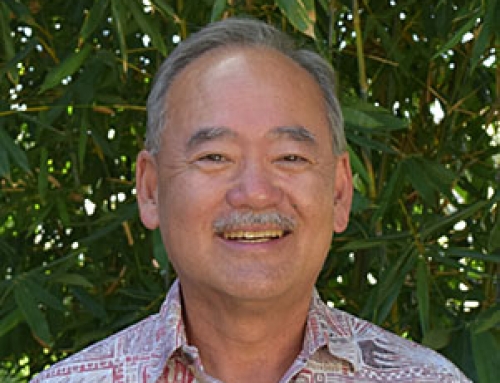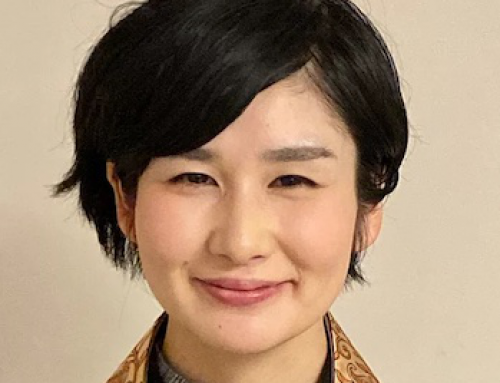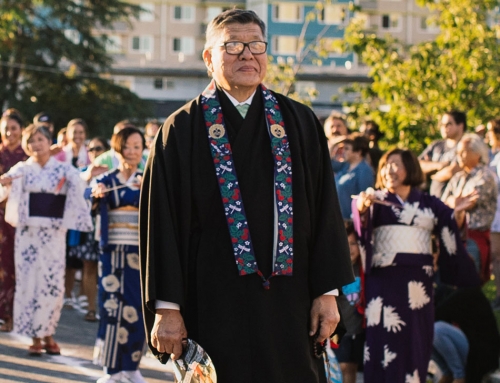What do you put in the center of `your` life? What do you rely on in `your` life?
These questions are repeatedly posed to the attendees of the services not only through the Dharma talks but also by the temple decorations. The Buddhist arts and sculptures have played an important role to lead us to question ourselves as to what Dharma has shown us for years and years. Here, I would like to share an interesting message which our Ranma includes, which is located above the entrance of the altar area. When you visit our Hondo, you can see the gorgeous sculptures of peacocks and peony flowers in our Hondo main hall. Although peacocks have a special meaning in Buddhism, I would like to focus on the design of peony flower here this time. These sculptures question us about what our lives take refuge in and if we have somewhere we can truly feel safe.
In Japan, the combination of certain animals and plants such as Chinese lion and peony flower, tiger and bamboo grove are popular. You can often see these combinations in Kimono patterns and Japanese traditional arts.
When you focus on the two animals, lion and tiger, what kind of image do you have towards those two? People say that the lion is the king of beasts because they are at the top of the food chain in the savannah, and they sometimes hunt and eat larger animals than themselves. Also, the tiger is the biggest among all the cats, intelligent and strong. Although they live alone, different from lions, they are actually known as the king of the jungle. I bet nobody doubts those two have nothing that frightens them because they are the strongest in the jungle and the savannah.
OK, let’s start from the tiger because we are in the Year of the Tiger.
Although the tiger is the strongest and the most intelligent creature in jungle, do you know its weakness? The tiger is a very ferocious animal, but it seems that it cannot beat peaceful elephants because the “elephant” has a large body and they live in a herd. If a tiger is attacked by an elephant, it escapes to the bamboo grove.
Elephants with their large bodies and fine tusks do not enter the bamboo grove because they don’t want to ruin their important tusks. For this reason, “Bamboo and Tiger” indicates “a safe place to live.”
As we say that the lion is the king of the beasts, and it has no natural enemies. But they are only afraid of a harmful insect or diseases which live or feed on the blood of mammals and eat flesh underneath the skin, which can kill a lion as well in the worst-case scenario. So, lions spend their nights under the peonies where these harmful insects die by evening dew of a peony flower. For Lions who have a fear of dying because of these pests, under the peony is the only place where they feel safe and at peace. This is why the lion and the peony combination is common in Japanese art.
Then, now take a look at our ranma, I think the point is that there are peonies facing toward each of us. I believe that this is a big question to us from our ancestors and Shinran shonin “where is ‘place of peace’ for `your` life?”
Based upon the story of the tiger and the lion, here I would say that we can understand ‘the place of peace’ could be like a “shelter- somewhere where we can unload our sufferings, anxieties and fears which we have” and “home- somewhere we feel safe and at peace and be ourselves.” But it doesn’t always refer to certain places, but it can be a person who makes you feel at home and who makes you feel protected.
Just like the place of peace for the tiger is bamboo and the lion can feel safe under the peony, the place of peace for our lives could be like a shelter and home, somewhere where we can be vulnerable and free from any fears, anyone’s, or our own judgment and somewhere where we will be allowed to be ourselves as we are.
We are in this world always judging others. This person is good or bad, winner or loser, rich or poor, something like that. On the contrary, it also means we are evaluated by people surrounding us. It is inevitable for us to be judged as long as we live in this world.
Also, even the person who looks perfect and strong has their own sufferings and anxieties, we just can`t see it. We always manage to hide our own weaknesses and anxieties from others and show ourselves bigger than our real selves by our words and behaviors.
Looking back at how we live, I projected ourselves deeply into a lion who is regarded as a king of the savannah because we are truly not very strong like a lion but try to pretend to be stronger and bigger than others like a lion.
Going back to the peony flowers in the ranma, it questions us ‘where is ‘place of peace’ for our lives?”
In Sanbutsuge which is commonly chanted for the services, there is a line “Issaikuku Isadaian.” It means that the reason why Amida’s great compassion is turning for us. Amida wished to attain enlightenment when Amida was still at the stage of Bodhisattva because Amida solely wanted to give great peace to all beings who live in fear. Amida Buddha wishes for us to be able to accept the Pure Land and his wisdom and compassion as a firm place of peace where every living thing is equally embraced beyond any comparing and discrimination without any sufferings, anxieties, and fears in our lives.
The images of the Peonies on ranma are facing towards us. I can say it is showing us that the Buddha Dharma is here for us as something we can take refuge in as the place of peace where we are allowed to be accepted as we are with our weaknesses, anxieties and fears. Just like the place of peace for the Lion is under the peonies, it is the Buddha Dharma for us.




